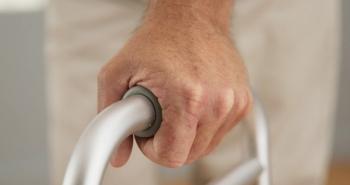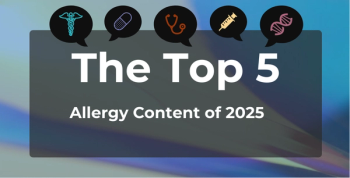
Navigating Diagnosis, Treatment, and Care Management in Postural Orthostatic Tachycardia Syndrome
Understanding postural orthostatic tachycardia syndrome is important in order to improve prevention and outcomes.
Have you ever experienced dizziness when standing up too quickly? Postural orthostatic tachycardia syndrome (POTS) is a condition that throws the body’s natural balancing act into disarray, causing the heart to race when moving.1
Although it is still a highly misunderstood diagnosis, POTS has recently gained more attention, as celebrities and athletes have come forward about their experience living with the condition. US Olympian Katie Ledecky may have made winning look effortless at the Paris Olympics, where she added 4 more medals to her legendary career, but her journey has been far from smooth.2 In her memoir Just Add Water: My Swimming Life, Ledecky revealed how POTS has tested her in ways that even the most grueling races could not.
“There's the sympathetic nervous system, also known as the fight or flight, and then there's the parasympathetic, also known as rest and digest,” explained Arthur L. Jenkins III, MD, FACS, CEO of
Diagnosis and Challenges
Diagnosing POTS can be challenging due to its wide range of symptoms, which often overlap with other conditions like anxiety, chronic fatigue, or dehydration.1 Many patients endure months or even years of unexplained symptoms before receiving a proper diagnosis. Health care providers typically begin by reviewing symptoms, medications, and medical history, followed by a physical exam. The tilt table test is the gold standard for diagnosing POTS, as it monitors heart rate and blood pressure changes when transitioning from lying down to standing. Additional tests, such as blood and urine analyses, autonomic function tests, and imaging like echocardiograms, may help confirm POTS or rule out other conditions. The diagnostic process can be lengthy and complex due to the lack of widespread awareness and the need for specialized testing, which delays treatment and exacerbates patients’ physical and emotional challenges.
Treatment Approaches and Care Management
Although there is no cure for POTS, effective symptom management relies on a combination of individualized strategies. Exercise is a cornerstone of treatment, focusing on reclined aerobic activities like swimming, rowing, or recumbent cycling to improve cardiovascular conditioning without triggering symptoms. Strengthening core and leg muscles also is particularly helpful, as is incorporating isometric exercises to push blood back toward the heart. Transitioning slowly between positions, like sitting up in bed before standing, can also help the body adapt to changes in posture.
Diet and hydration play another significant role in managing symptoms. Increasing sodium intake (3000-10,000 mg/d) and drinking 2 to 2.5 L of fluids daily can help those with low blood volume. Further, eating smaller, frequent meals reduces the strain on blood flow during digestion, while balanced nutrition with fiber, protein, and complex carbohydrates can stabilize energy levels.
In some cases, providers may recommend off-label medications such as fludrocortisone to increase blood volume, midodrine to constrict blood vessels, or β-blockers to reduce heart rate.
POTS and Long COVID
The link between POTS and long COVID has emerged as a critical area of concern, particularly in young individuals.3 Although arrhythmias during acute COVID-19 infection are well documented, lingering symptoms post infection are increasingly associated with dysautonomia, a malfunction of the autonomic nervous system. Among the most common cardiovascular manifestations of dysautonomia is POTS, with numerous reports highlighting its development following COVID-19. Potential mechanisms driving this connection include hypovolemia, inflammation, neurotropism, and autoimmunity, although the exact pathways remain unclear. The overlap of long COVID and POTS presents challenges for both diagnosis and treatment, as targeted therapies are still in development.
The Path Forward for Living With POTS
While each case is unique, POTS can significantly disrupt daily life, although many people see improvement with lifestyle adjustments, medications, and targeted exercise. Understanding POTS is key to managing this often overlooked but life-altering condition. Greater awareness, research, and early intervention are essential to improving outcomes for those affected.
“It’s not normal to get dizzy when you stand up,” Jenkins told AJMC. “Once it happens regularly, like once a day, every day, that's telling. And then for some people, it's every single time they stand up, but they get minimized. Their concerns are minimized by well intentioned, but equally uninformed friends, family, physicians, people otherwise in position of power, teachers, whatnot. Don't be shy about advocating for yourself to get better answers.”
References
1. Postural orthostatic tachycardia syndrome (POTS). Cleveland Clinic. Accessed December 17, 2024.
2. Lee B. Katie Ledecky has POTS, postural orthostatic tachycardia syndrome. Forbes. August 16, 2024. Accessed December 17, 2024.
3. Chadda KR, Blakey EE, Huang CLH, Jeevaratnam K. Long COVID-19 and postural orthostatic tachycardia syndrome- Is dysautonomia to be blamed? Front Cardiovasc Med. 2022:9:860198. doi:10.3389/fcvm.2022.860198
Newsletter
Stay ahead of policy, cost, and value—subscribe to AJMC for expert insights at the intersection of clinical care and health economics.







































